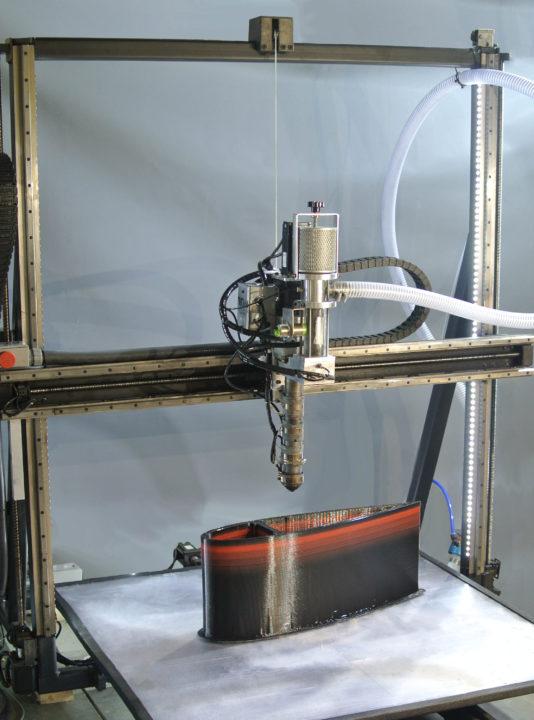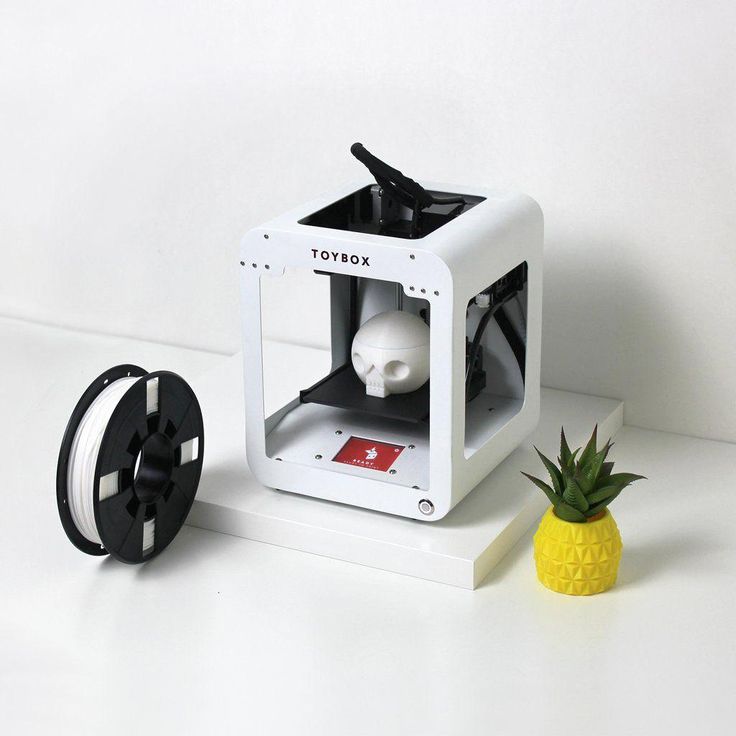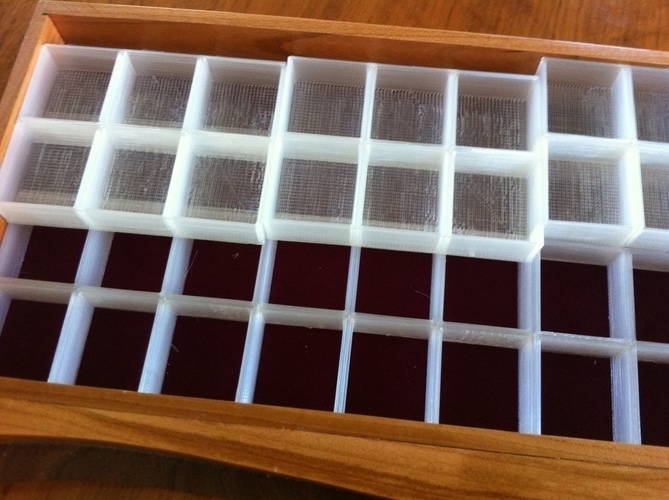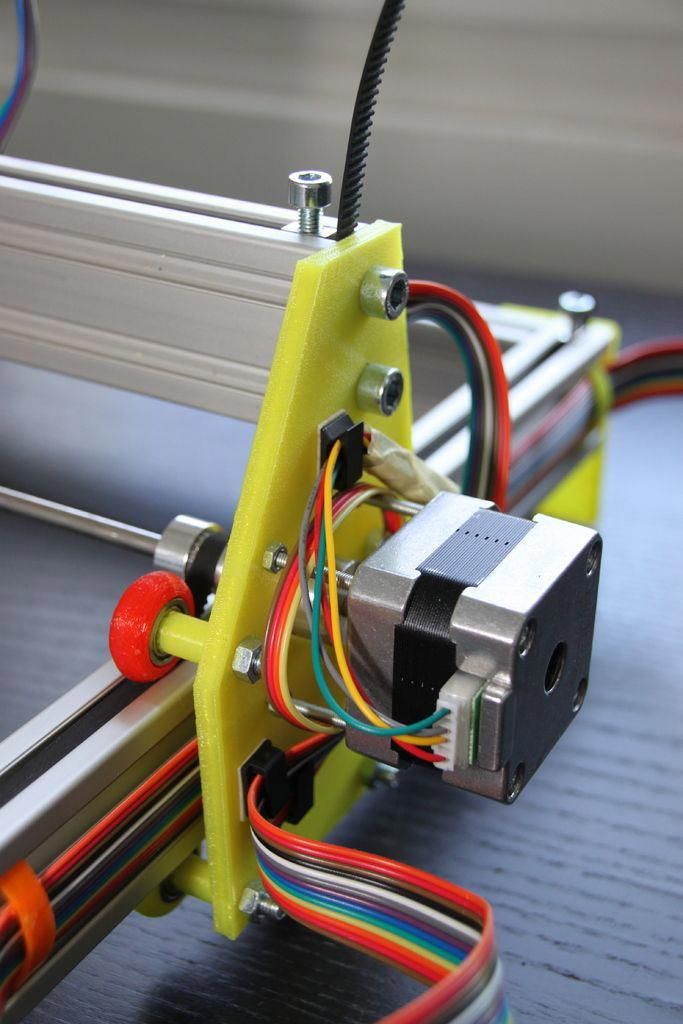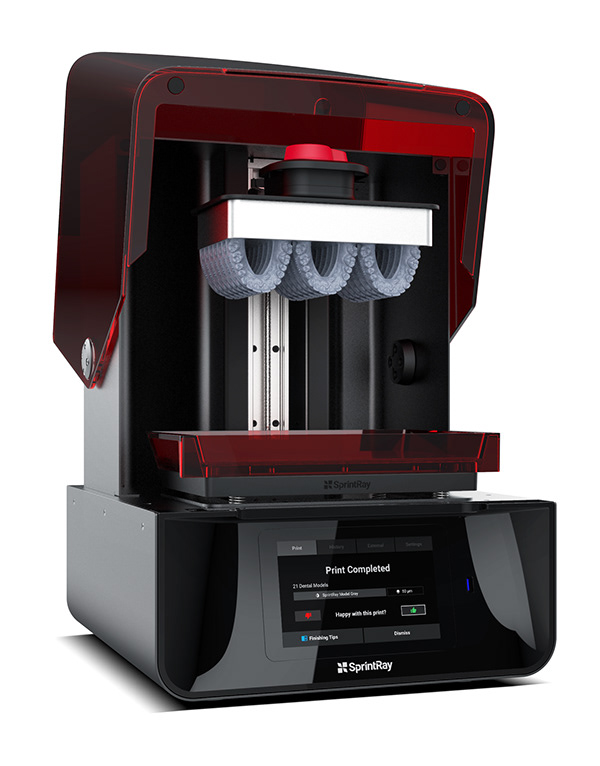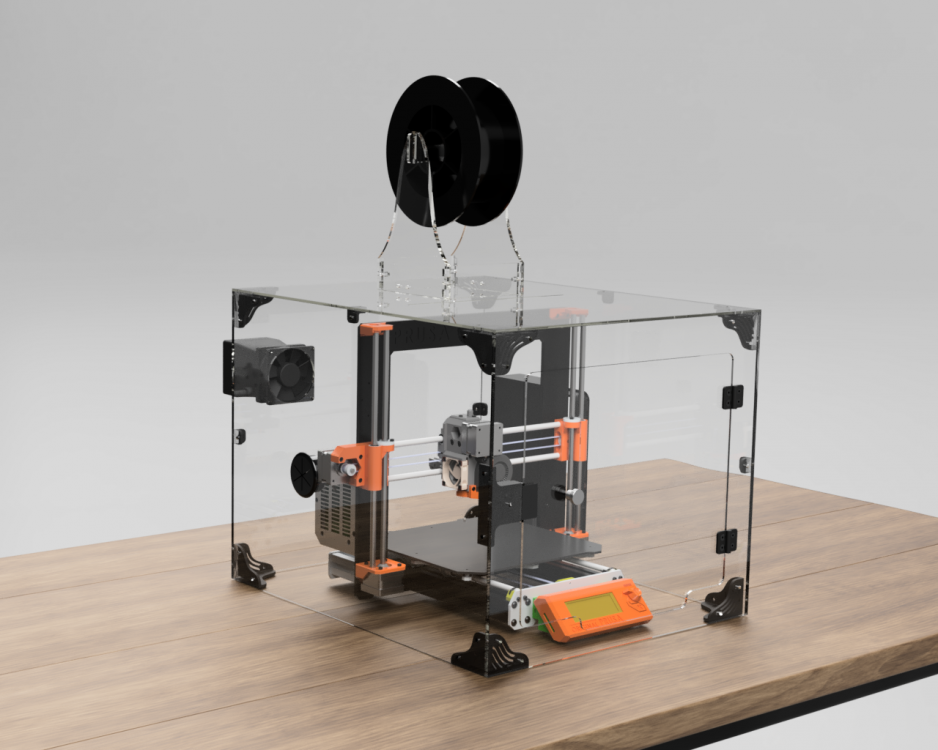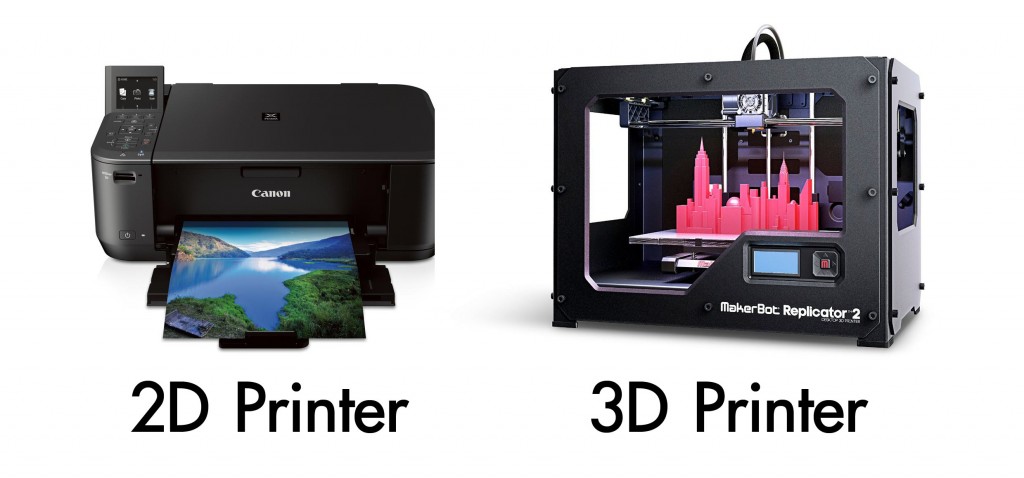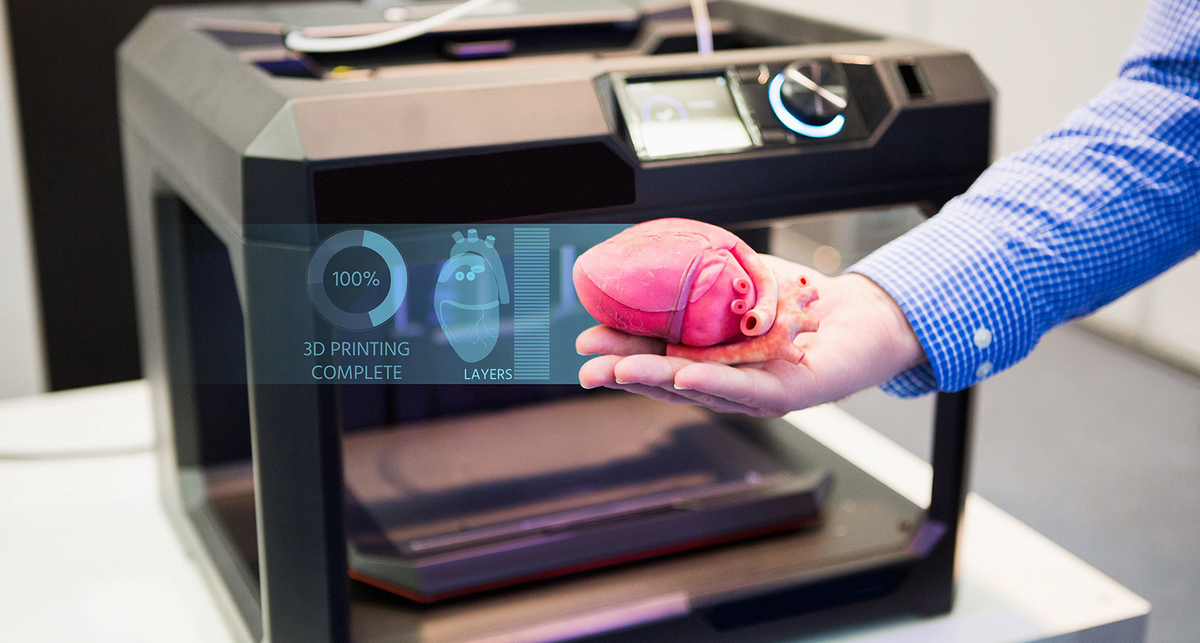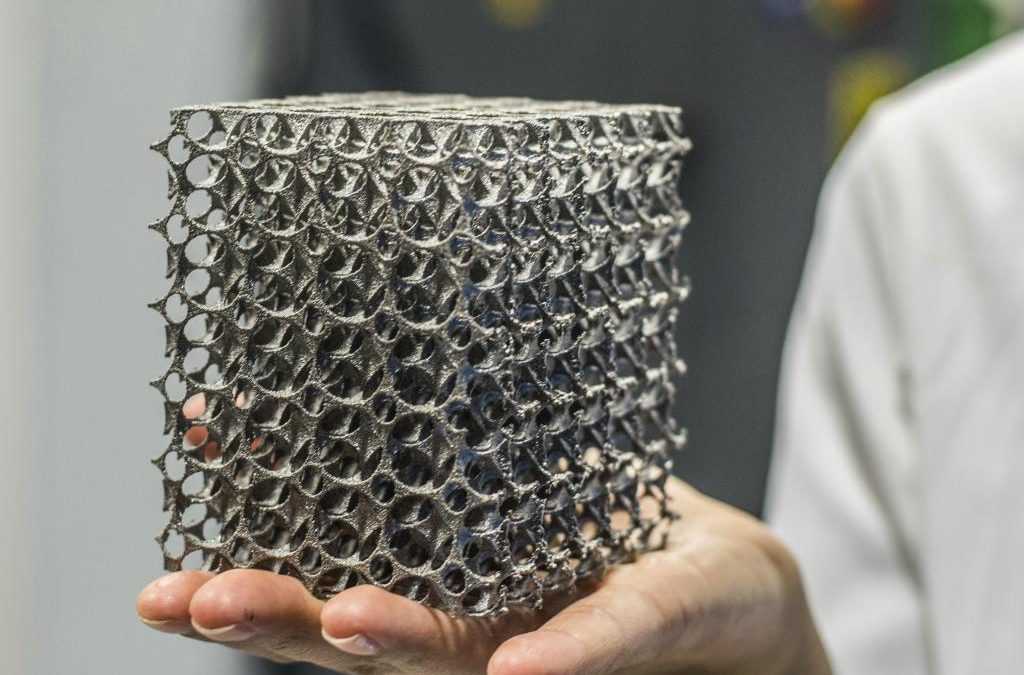Fastest 3d printer
7 Fastest 3D Printers 2022 In Every Price Range
One of the major gripes with 3D printing is many consider it to be slow. However, over time both the speeds of FDM and resin printers have crept up — and there are now some super-fast options for both technologies.
For industrial printing, there are printers now reaching speeds competitive with traditional manufacturing, aiming to displace injection molding.
But what are the other fastest 3D printers in the world?
We have listed the world’s fastest 3D printers in every price range below, for both FDM and resin printers – but first, let’s explain the factors that affect the speed of 3D printing.
Do Bigger 3D Printers Print Faster?
A bigger resin 3D printer does indeed print faster, but this is more in the sense of being more productive. A resin printer cures an entire layer on the XY axes, regardless of size, in one go. This means that the larger the printer, the more productive the printer is.
However, this isn’t the case for FDM printers, which need to deposit filament across the entire layer before moving on to the next.
FAST FDM PICK
Flsun Super Racer200mm/s makes it one of the fastest FDM printers around
Comes 95% pre-assembled
Available at Amazon here
FAST RESIN PICK
Anycubic Photon M3 PlusSuper-fast 100mm/h speed
Larger resin build area for scalable minis prints or larger resin models
Available at Anycubic here Amazon here
SUPER-FAST PICK
Phrozen Sonic Mega 8KExtremely high-res 8K LCD screen
Enormous build area and 70mm/h speed
Available At Phrozen here Amazon here
How Fast is a 3D Printer?
As for the technologies and 3D printers we have now, simply stating the fastest possible 3D printing speeds is difficult.
That’s because – and I know it’s frustrating to read this – it depends on several factors:
Resolution of the 3D printed part: before you start printing, you need to slice your model into layers on a 3D slicer. The more layers, and the thinner each layer, the longer the part will take to print at the same speed. A part printed with 50-micron layers will have twice as many layers as the same part printed with 100-micron layers, and take twice as long at the same speed.
- We also have a guide to high resolution 3D printers.
Quality of print: theoretically you could run a budget 3D printer at an extremely high speed, and it would still print. But the results wouldn’t be anything like how it looked on your slicer. It would be a mess of filament hairs and blobs, because the speed settings were set too fast. Some 3D printers can handle high-speed 3D printing, some cannot.
3D printing technology: how fast a 3D printer prints depends on the technology.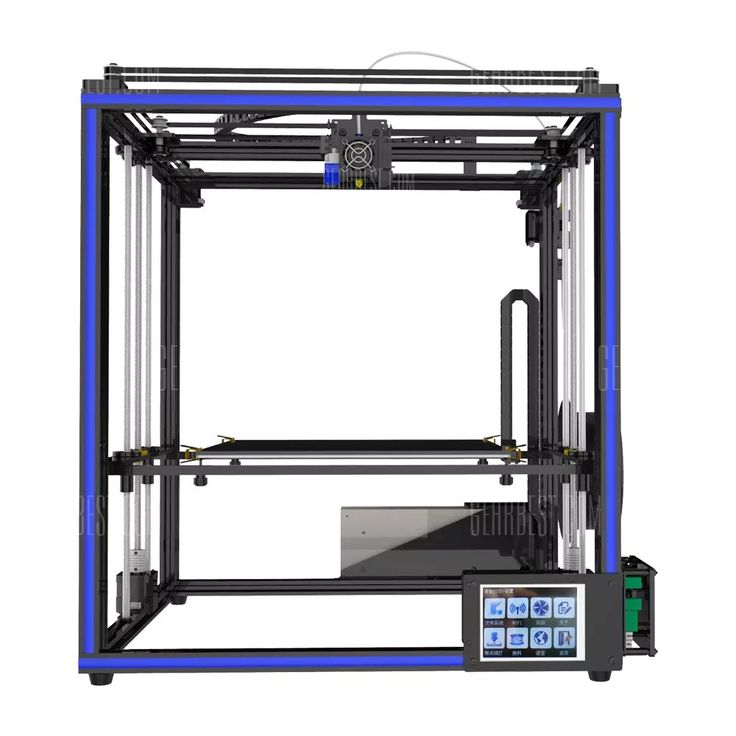 Resin 3D printers are significantly faster than FDM 3D printers as they can cure entire layers at once, rather than depositing filament over each part of the layer. The fastest 3D printing technologies include Multi Jet Fusion and resin 3D printing technologies like MSLA.Resin 3D printing technologies are known for being faster than FDM.
Resin 3D printers are significantly faster than FDM 3D printers as they can cure entire layers at once, rather than depositing filament over each part of the layer. The fastest 3D printing technologies include Multi Jet Fusion and resin 3D printing technologies like MSLA.Resin 3D printing technologies are known for being faster than FDM.
Material: some materials are easier to print than others, putting less demand on the printer and leading to a slightly faster print.
Complexity of the model: You will be able to print a cube block far quicker than an intricate 3D printed jewelry piece. This is because you can print larger layers and at a faster print speed without a notable loss of quality, since the cube is a very simple shape with no details.
Size of print: fairly obvious, but a larger print will take far longer than a small one. A full-size vase will take around 12 hours to print in normal detail on most FDM 3D printers, but a small statue may take under an hour.
Nozzle size: for FDM 3D printing, smaller nozzles mean more intricate details can be printed more accurately, but larger nozzles can potentially print faster.
Will 3D printers get faster?
Almost certainly. We’ve already seen a number of major innovations that make 3D printers faster in the last decade. In 2012, the first delta 3D printers started to appear, which print significantly faster than previous Cartesian 3D printers.
Then, new resin 3D printer innovations such as Carbon 3D’s CLIP, and Uniz’s UDP technologies made SLA and DLP faster. Other significant speed innovations include HP’s Multi Jet Fusion technology, and also the huge advances being made in many metal 3D printers such as those by Desktop Metal and Markforged.
The Fastest 3D printers 2022 in Every Price Range
| Name and brand | Build volume (mm) | Max speed | Price | Where to buy |
|---|---|---|---|---|
| Flsun Super Racer | 260 x 260 x 330 | 200mm/s | $499 | Amazon here |
| Anycubic Photon M3 Plus | 197 x 122 x 245 | 100mm/h | $699 | Anycubic here |
| Anycubic Photon M3 Max | 298 x 164 x 300 | 60mm/h | $1099 | Anycubic here |
| Phrozen Sonic Mega 8K | 330 x 185 x 400 | 70mm/h | $2199 | Phrozen here |
| Uniz Slash UDP | 293 x 122 x 200 | 600mm/h | $1,999 | Matterhackers here |
| WASP 2040 Pro Turbo | 200 x 200 x 400 | 500mm/s | $3,400 | Amazon here |
| HP Jet Fusion 5200 | 380 x 284 x 380 | 4115cm3/h | Quote |
3DSourced is reader-supported. When you buy through links on our site, we may earn an affiliate commission. Learn more
When you buy through links on our site, we may earn an affiliate commission. Learn more
Flsun Super Racer – Fastest FDM 3D Printer Under $500
- Price — Check latest price at Amazon here
- Technology: FDM Delta
- Max Print Speed: 200 mm/h
- Build Volume: 260 x 260 x 330 mm
True to its speedy name, the Flsun Super Racer is a Delta FDM printer that absolutely gallops with a top print speed of 200 mm/h. It’s an upgraded version of Flsun’s QQ-S, which after some one-on-one time we found to be a competent, worthwhile printer for large projects.
Delta printers are known for offering higher speeds than their Cartesian brothers, but Flsun is pushing the boat out to new extremes with the Super Racer. Most standard FDM printers perform best at a comfortable 50-60 mm/h, while the Super Racer delivers solid quality prints at four times that.
With a decently-sized 260 x 260 x 330 mm build volume, the Super Racer is also big on vertical print capacity, ideal for those towering prints that exceed the dimensions of budget FDM printers. Throw in a thoughtful design, quality components, automatic bed leveling, breezy 20-minute assembly, a responsive, easy-to-navigate detachable touch screen, and the Super Racer comes awfully close to a speed freak’s dream 3D printer.
Throw in a thoughtful design, quality components, automatic bed leveling, breezy 20-minute assembly, a responsive, easy-to-navigate detachable touch screen, and the Super Racer comes awfully close to a speed freak’s dream 3D printer.
Now, all this speed does come with a trade-off. Delta printers, the Flsun Super Racer included, lack the accuracy and consistent print quality offered by Cartesian 3D printers. The difference is relatively negligible, but it’s a point to consider before buying for makers that favor quality over speed.
On the filament front, the Flsun Super Racer’s Bowden extruder setup works great for PLA but coughs up the usual Bowden-related jamming and clogging issues with flexibles. For example, if you’re working with TPU, you’re better off sticking to a classic Cartesian printer – ideally with a direct drive extruder.
Anycubic Photon M3 Plus/Max – Fastest Resin 3D Printers Under $1,000
- Price: $699 / $1,099 — M3 Plus Available here / M3 Max Available here
- Technology: MSLA Resin
- Max Print Speed: 100 mm/h / 60 mm/h
- Build Volume: 197 x 122 x 245 mm / 298 x 164 x 300 mm
More than simply an update to the long-running Photon series, the Anycubic Photon M3 machines are turning more than a few heads as the fastest resin 3D printer range around.
In particular, the Anycubic Photon M3 Plus proposes a top print speed of 100 mm/h. The beauty of resin printers is that they cure in layers, regardless of how much space on the build plate that layer takes. Those 100 mm/h apply whether you’re printing a single small miniature or a batch of twelve, which makes the Anycubic Photon M3 Plus exponentially more productive.
The Anycubic Photon M3 Max is no slouch either, offering a respectable 60 mm/h, but does this across a massive 298 x 164 x 300 mm. That’s the largest of any Anycubic resin printer and among the highest capacities found on consumer-grade printers, rubbing shoulders with the hulking Elegoo Jupiter and Phrozen Sonic Mega 8K.
Elsewhere, the Photon M3 duo stands out for offering excellent detail with 34 microns XY resolution on the Plus and 46 microns on the Max. The Max has a 7K LCD, one of the highest pixel counts on the market, while the Plus pushes a 6K LCD – higher than the standard 4K found on comparable printers. Both machines also ship with Anycubic excellent textured checkerboard build plate, which offers superb print adhesion.
Both machines also ship with Anycubic excellent textured checkerboard build plate, which offers superb print adhesion.
Read the full comparison: Anycubic Photon M3 vs M3 Plus vs M3 Max
Phrozen Sonic Mega 8K – Fastest High-Quality Resin 3D Printer
- Price: $2,199 — Available at Phrozen official here
- Technology: MSLA Resin
- Max Print Speed: 70 mm/h
- Build Volume: 330 x 185 x 400 mm
With the Phrozen Sonic Mega 8K, size and speed combine into arguably one of the most impressive mid-range professional resin printers on the market.
The 330 x 185 x 400 mm build volume is the largest available in this price range, and the Sonic Mega 8K darts across this printing expanse at a nippy 70 mm/h. No other printers manage to weave in such a large build volume with such high speeds; it’s always been one or the other.
The Phrozen Sonic Mega 8K allows makers to hone in on all the fine features and intricacies of even the most detailed models and minis thanks to a 43-micron resolution, propped up by a pixel-rich 15’’ 8K LCD. It’s a level of quality that simply isn’t currently available on any other printer in the same printer segment.
It’s a level of quality that simply isn’t currently available on any other printer in the same printer segment.
The build plate comes pre-calibrated, allowing you to print without delay once the Mega 8K lands on your doorstep. A clever dual linear rail design ensures the printer behaves and delivers those sharp details even high up into the upper reaches of the build area.
If you need a mammoth-format printer at a reasonable price to power a small business where time is of the essence, there’s little else out there that comes close to the Phrozen Sonic Mega 8K. If the build volume exceeds what you’ll conceivably ever need, a lower-cost resin printer such as the Anycubic Photon M3 Plus or even the standard M3 is likely a better use of your money. The Phrozen Sonic Mega 8K is a jumbo printer and will be far too much for most amateur makers.
Uniz Slash Plus UDP — Fastest desktop 3D printer
- Max print volume: 293 x 122 x 200 mm
- Price: $1,999 — Available on Matterhackers here
- Fastest 3D printer speed: 600mm/hour in UDP mode
Uniz have made a big impact since their original Kickstarter campaign that raised over $500,000 to produce super-fast resin 3D printers at consumer prices.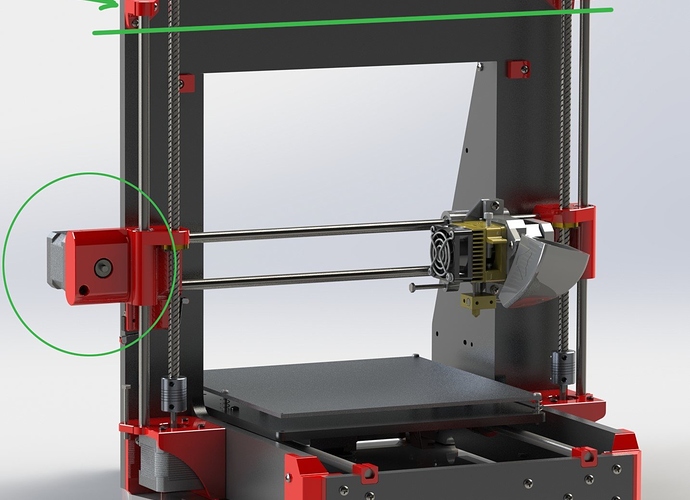 This quick 3D printer uses Uniz’s Uni-Directional Peel (UDP) technology to print far faster than its competitors, at up to 600mm/hour when in UDP mode.
This quick 3D printer uses Uniz’s Uni-Directional Peel (UDP) technology to print far faster than its competitors, at up to 600mm/hour when in UDP mode.
When not in UDP mode the maximum 3D printer speed is 200mm/hour, but this is still super fast. This is because not all parts are compatible, for example, any parts with cross sections, or fully enclosed parts cannot be printed in UDP mode; and no parts with solid infill can be printed either. You are also restricted as very tall prints cannot be printed in UDP mode, but if your part qualifies then you can print extremely quickly!
Not only is it an extremely fast 3D printer, but it’s also accurate. This SLA 3D printer has an XY resolution of 75 microns, and a minimum layer of thickness of just 10 microns. As a result, parts have very good surface finish and look almost like they have no layers at all. The printer can also calibrate itself, can be operated via your phone or table on the mobile app, and weighs just 12kg. It’s certainly one of the best speedy 3D printers for the price.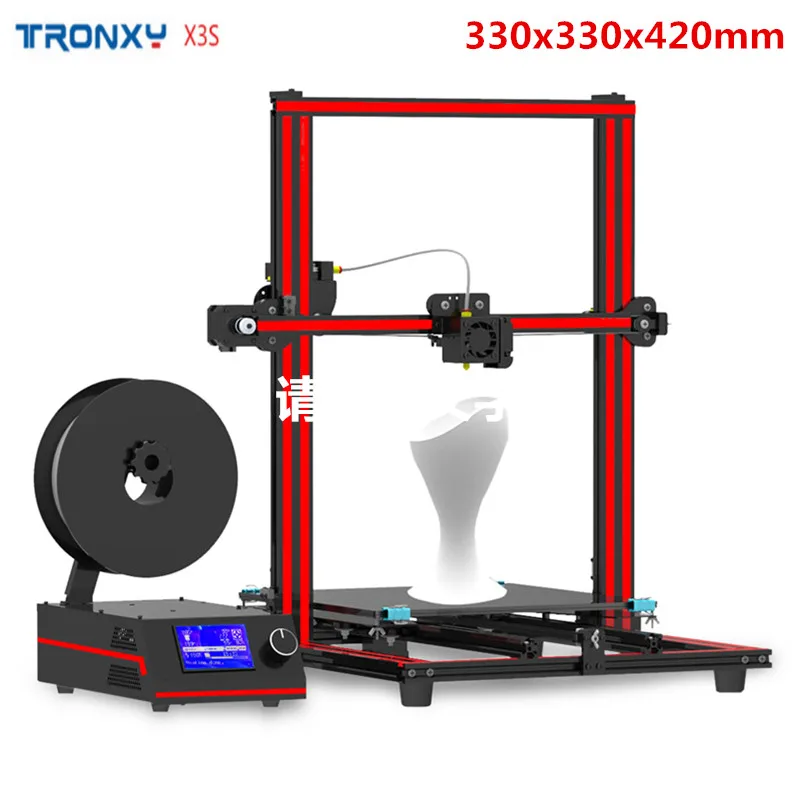
WASP 2040 PRO Turbo — Fastest 3D printer in the world
- Price: $3,400 — Available on Amazon here
- Max print volume: 200 x 200 x 400 mm
- Fastest 3D printer speed: 500mm/s recommend (some say it can print even faster!)
Delta 3D printers are known for their speed, and are the fastest FDM 3D printers in the world. The WASP 2040 PRO Turbo is a delta printer that is not only incredibly fast – at up to a recommend 500mm/s – but is also extremely accurate for an FDM printer. The resolution of up to 50 microns means very accurate and low cost prototypes and parts can be produced, and in record time. WASP claim they make the fastest 3D printers in the world for FDM.
WASP 3D printers are known for their reliability, with the Italian company ensuring the printers operate with workhorse-like consistency. It can print 3D printer filaments including ABS, PLA, PETG and Nylon, so if you want to print stronger parts from one of the tougher plastics you still can, and you can use third party filaments if you prefer – the WASP allows for these.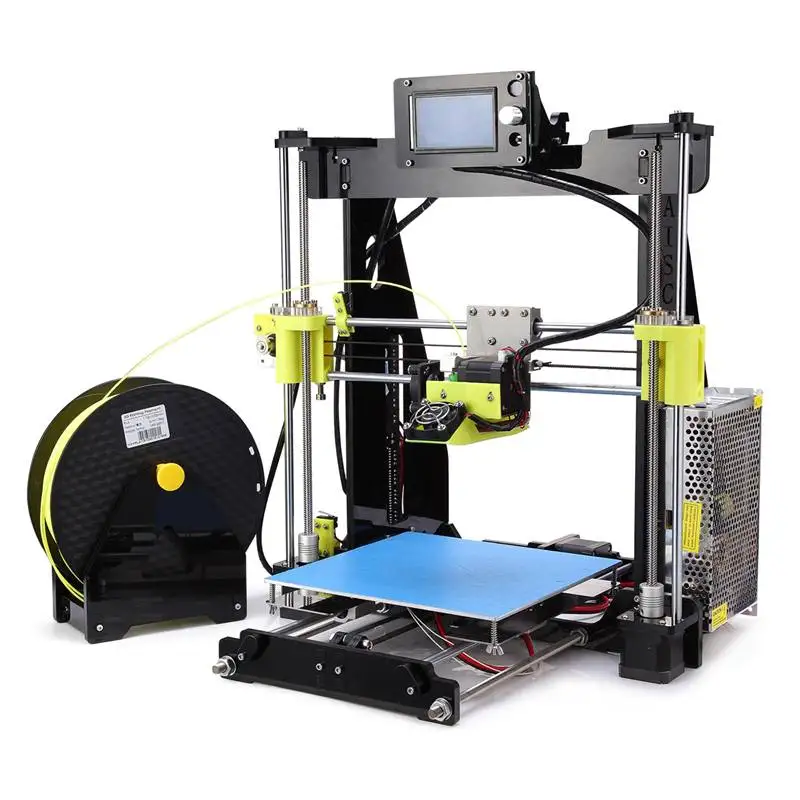 and you can choose to buy the WASP 2040 as either a single or dual extruder 3D printer.
and you can choose to buy the WASP 2040 as either a single or dual extruder 3D printer.
Unlike most RepRap 3D printer deltas, the WASP 2040 Turbo comes fully assembled, so those who aren’t masters of DIY do not need to worry. You can also choose to order it either as a single or dual extruder 3D printer based on your printing needs.
It’s the world’s fastest 3D printer for FDM, and also accurate and reliable – what more could you want for under $5,000!
- It also has a variation designed specifically as a clay 3D printer.
HP 3D Jet Fusion 5200 — Fastest Industrial 3D printer
- Price: Requires a quote
- Max print volume: 380 x 284 x 380 mm
- Fastest 3D printer speed: 4115cm3/hour
HP have only been actively involved in the 3D printing industry for the last few years, but have brought such technological advantages in that short space of time. The Jet Fusion 5200 epitomizes this, marking uncharted territory for 3D printing where it is now considered viable for mid-range production.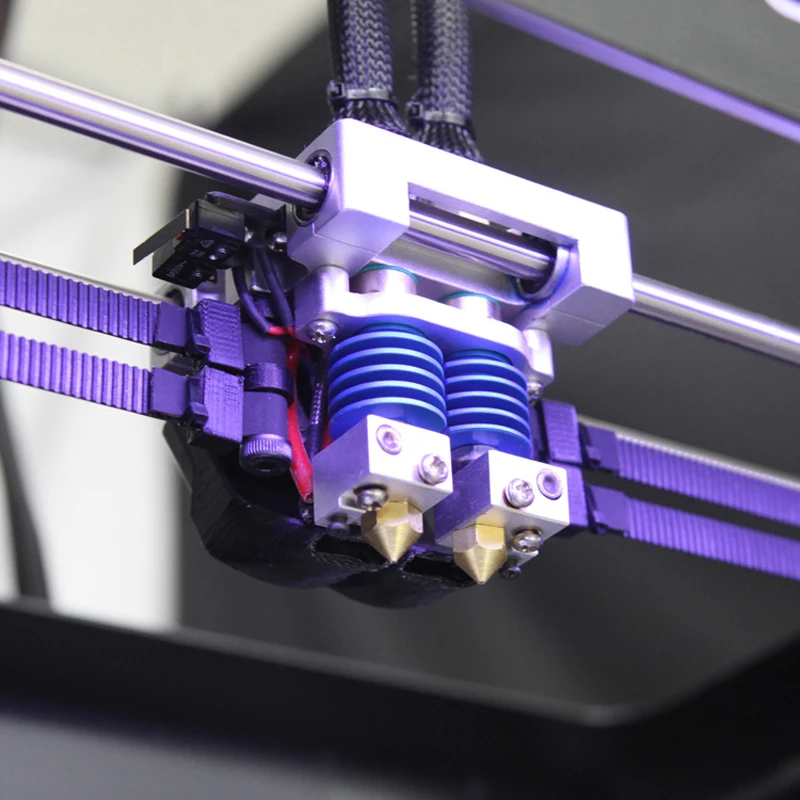
Multi Jet Fusion has always been known for its fast 3D printing speed, but the Jet Fusion is even faster than its predecessors. With speeds up to 4115cm3/hour, it’s faster than the Jet Fusion 4200 (4000cm3) and the 3200 (2800cm3) – and these were already some of the fastest 3D printers in the world. The high-quality 1200dpi print head resolution allows for extremely accurate parts with smooth surface finishes and crisp, sharp edges.
The Jet Fusion 5200 combines this astonishing speed with low part cost and scalability. Whole layers can be printed at once, rather than tracing each layer as with Selective Laser Sintering, meaning multiple parts can be printed at once without a drop off in productivity. Multi Jet Fusion isn’t known for its versatility of materials, but PA12, PA11 Nylons and TPU are strong materials with good properties for a variety of industries. It’s extremely fast, extraordinarily accurate, and a rare example of 3D printers being competitive in mid-volume part production – very exciting.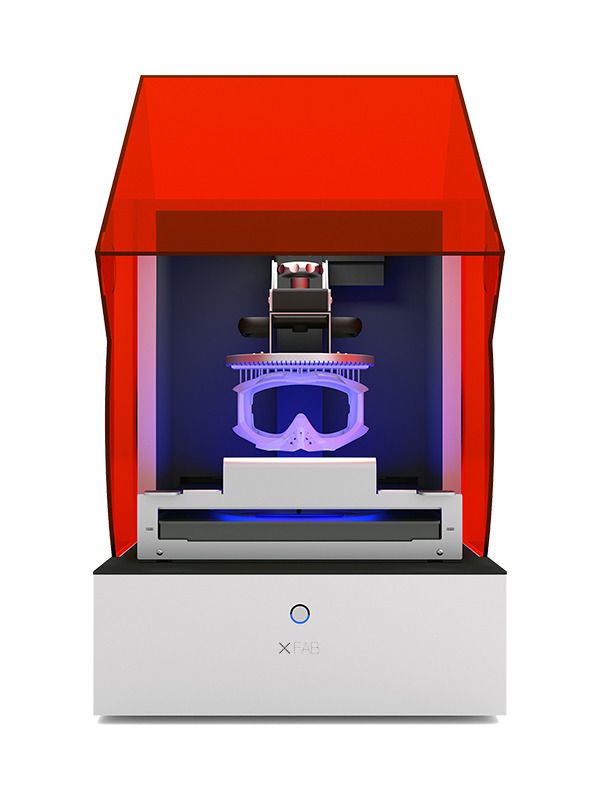
Do you really need a fast 3D printer?
Speed is always useful; nobody chooses to wait in a queue longer than they need to. However, with the quickest 3D printers, there are some cases where you can’t take advantage of this speed.
For FDM 3D printers, some materials become volatile and print with imperfections if you don’t slow right down, like PEEK, PC, and others. Printing at 150mm/s+ would just ruin your prints, so the speed is useless here.
Also, if you are printing a very simple object like a cube, speed becomes less useful as you can just use very large layer heights and print quickly anyway.
However, if your business depends on quick production, then absolutely go for a printer that can either print objects very quickly, or multiple objects simultaneously. The ability to rapidly prototype new designs and innovate quicker is invaluable, and other industries like 3D printed jewelry production or hearing aids need to be able to print custom designs at the highest speeds possible.
So, it depends. For hobbyists, speed is great for quality of life and printing all the cool things and useful 3D prints you can. For industry it can be more necessary, and businesses often opt for an industrial 3D printer than can meet their production speed requirements.
How Fast Can PLA Be 3D Printed?
The fastest FDM printers, such as the Flsun Super Racer, can print PLA up to 200 mm/h. However, the most common 3D printers, such as the Ender 3, can print PLA at around 50 to 80 mm/h without sacrificing print quality.
Related articles:
- Best large resin 3D printers (bigger = faster!)
- Best delta FDM 3D printers
- Best FDM 3D printers
Choosing the Fastest 3D Printer
Compared to traditional ways of manufacturing, like, for example, injection molding, 3D printing has a number of advantages, production speed being one of them. The whole process of creating a part, from the very beginning to the ready-to-use model, takes less time when a 3D printer is used.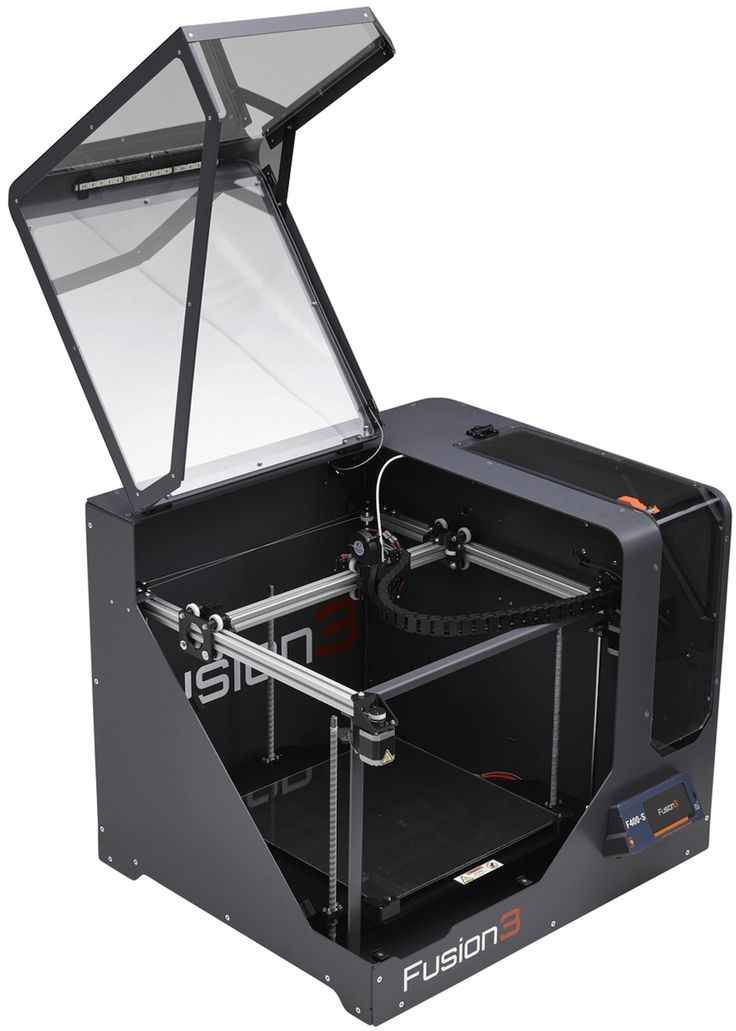 We can go further and find out if all 3D printers provide the same printing speed. The answer is obvious — like with any equipment, technical specifications of 3D printers differ to a great extent, and speed is no exception.
We can go further and find out if all 3D printers provide the same printing speed. The answer is obvious — like with any equipment, technical specifications of 3D printers differ to a great extent, and speed is no exception.
Credit: behance.net
This is Top 3D Shop, and in this article, we are going to discuss which factors affect the speed of your printer, and name the fastest 3D printers in different price categories. Read on to learn more.
What is the fastest 3D printer?
Printing speed of different models may vary depending on a number of factors; one of them is the technology used. If we compare resin and FDM 3D printers, we’ll see that in general, FDM machines work a bit faster than conventional SLA devices, because it takes quite a lot of time for the laser to cure a layer. On the contrary, DLP and LCD resin printers are usually faster than FDM, as these technologies allow curing the whole layer at once, which saves pretty much time.
Credit: 3dprintspy.com
3D printers manufacturers often specify the parameter of print speed in millimeters per second. On average, a consumer printer can provide the speed of 40–60 mm/s. More advanced models are able to print at 100 mm/s, and the speed of high-end devices can reach 150 mm/s and more. But these numbers, although worth considering, don’t play the most important role in understanding how long the process of printing is going to take. Actually, they only define the speed at which the print head (in case of FDM) can move. Besides that, there are a whole lot of other factors that affect and determine the speed of your printer.
Which factors determine the printing speed?
- Printing materials and resolution. Some materials allow for higher speeds as they are easier to print and don't require much time to solidify. Besides, with some materials you can increase the layer height (i.e. the resolution), which speeds up the printing process, however, at the expense of quality.

Credit: 3dprint.com
- Print quality. Increasing the speed of your printer is likely to lead to loss of quality. This can be critical in some cases, like jewelry or dental manufacturing. So, it’s always the issue of finding the right balance between speed and acceptable quality.
- The complexity of the object being printed. The more complex the model you’re about to print, the more time you’ll have to wait for the final result. The fastest models to print usually have very simple geometry, like bricks, for instance.
Credit: blog.inkjetwholesale.com.au
The fastest resin 3D printers for home use
Resin LCD 3D printers are becoming popular with consumers, as they can print complex models with high resolution and accuracy, and smooth surface finish. This is the best choice for jewelry and dentistry manufacturing, and for end-use parts production which require high quality prints. Hobbyists who print miniatures will also appreciate all the advantages this technology provides.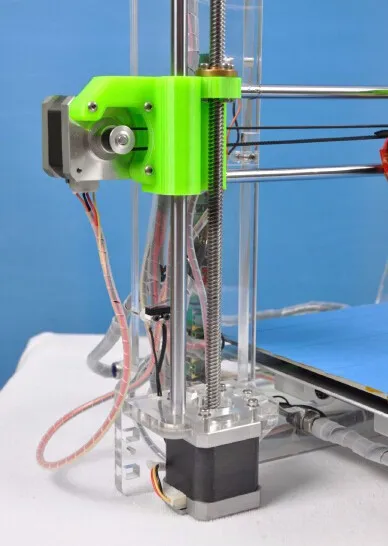
Under $300
Creality3D HALOT-ONE 3D printer
The Creality3D HALOT-ONE is an entry-level desktop resin 3D printer that can become a perfect choice for newbies. The device features a decent build volume of 127x80x160 mm and an LCD screen with 1620x2560 resolution. The XY-axis precision is 0.01–0.05 mm, which allows for high-quality prints. The Creality3D HALOT-ONE is equipped with a dual cooling system that provides quick heat release and helps eliminate the odor. The 5-inch color touchscreen makes operating the device easy and intuitive.
Credit: fabbaloo.com
Pros
- User-friendly operation
- High print quality
- Compact design
- Dual cooling system
Cons
- The manual is not clear and detailed
Under $500
Anycubic Photon Mono X 3D printer
Credit: anycubic.com
The Anycubic Photon Mono X is a large LCD-based resin 3D printer with a build volume as tall as 192x120x245 mm. The device is equipped with a monochrome 8.9-inch 4K LCD screen and a new parallel light source for more uniform exposure. Together with the minimum layer height of just 10 microns, these features allow using the Anycubic Photon Mono X for various applications where precise detailed printing is required.
The device is equipped with a monochrome 8.9-inch 4K LCD screen and a new parallel light source for more uniform exposure. Together with the minimum layer height of just 10 microns, these features allow using the Anycubic Photon Mono X for various applications where precise detailed printing is required.
Credit: cults3d.com
Pros
- Large build volume
- Fast print speed
- Great print quality
Cons
- Build platform is difficult to clean
Under $1000
Phrozen Sonic Mighty 4K 3D printer
Credit: phrozen3d.com
The Phrozen Sonic Mighty 4K features a 9.3-inch 4K monochrome LCD screen which provides the curing time of just 2 seconds per layer, thus offering the user high printing speed combined with outstanding quality. The device is equipped with a dual linear Z-axis, which increases stability and reduces vibrations while printing. The Phrozen Sonic Mighty 4K has a spacious build volume of 200x125x220 mm and can be used successfully both by consumers and professionals.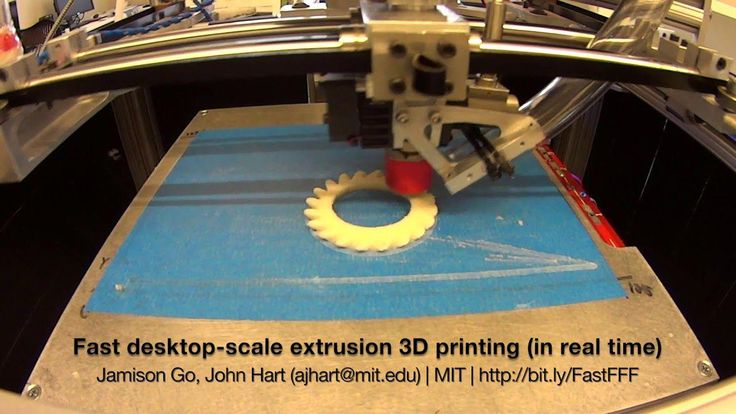
Credit: reddit.com
Pros
- Extremely fast printing speed
- High-detailed prints
- Large build volume
Cons
- Resin vat is not easy to fit
The fastest FDM 3D printers
FDM 3D printers’ performance is perfect when it comes to prototyping. They are extremely helpful in creating large parts with less complex designs, when highly detailed printing is not the priority.
Under $300
QIDI Tech X-Maker 3D printer
The QIDI Tech X-Maker is a great educational device due to some features, including its ease of use, the enclosed printing area for safety, and two modes of proprietary slicer software — the QIDI Education Slicer software, specially designed for students and newcomers, and the QIDI Print Software for more experienced users. The machine features a magnetic flexible heated printing bed and a built-in camera that allows real-time remote monitoring of the printing process.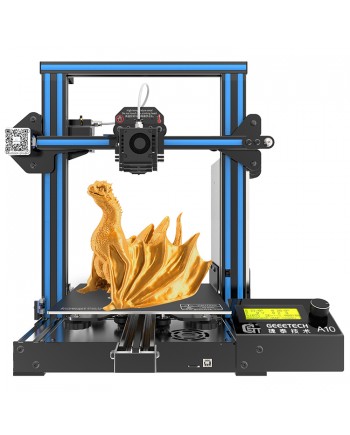
Credit: lesimprimantes3d.fr
Pros
- Compatible with a wide range of 1.75-mm filaments by different manufacturers
- Rather quiet
- Great value for money
Cons
- Relatively small build volume (170x150x160 mm)
Under $500
QIDI Tech X-Pro 3D printer
The QIDI Tech X-Pro is an FDM 3D printer that is suitable for a variety of applications, such as education, engineering and hobby. The device features a 6-mm aluminum build platform and a magnetic removable heated print bed. The QIDI Tech X-Pro provides high-quality accurate prints and is compatible with a great number of filaments, including those produced by third-party manufacturers.
Credit: amazon.com
Pros
- Dual extruder system
- Enclosed print chamber
- Intuitive and easy to operate
- Power-off resume feature
Cons
- Manual bed-leveling system
Under $1000
Wanhao Duplicator 5S Mini 3D printer
Credit: top3dshop.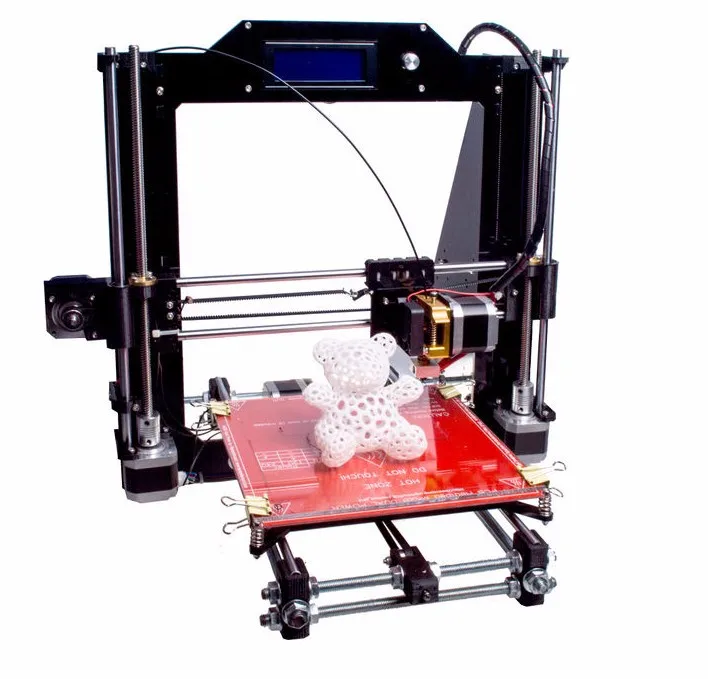 com
com
The Wanhao Duplicator 5S Mini is a smaller version of the Duplicator 5S. The machine is rather compact, still it features a pretty spacious build volume of 295x195x205 mm. The Wanhao Duplicator 5S Mini is equipped with a lightweight extruder providing high-speed printing. The minimum layer height of 20 microns allows for detailed prints with smooth surface finish.
Credit: wanhao3dprinter.com
Pros
- High printing speed
- Large build volume still compact footprint
- Durable lightweight extruder
Cons
- Open design increases the noise level
The fastest industrial 3D printer
Industrial 3D printers differ from their consumer counterparts to a great extent. These are normally huge machines capable of fast and quality printing of large product quantities. They are widely used for batch production and large-scale prototyping.
Massivit 1800 3D printer
The Massivit 1800 is an industrial-grade 3D printer based on the proprietary technology called Gel Dispensing Printing (GDL).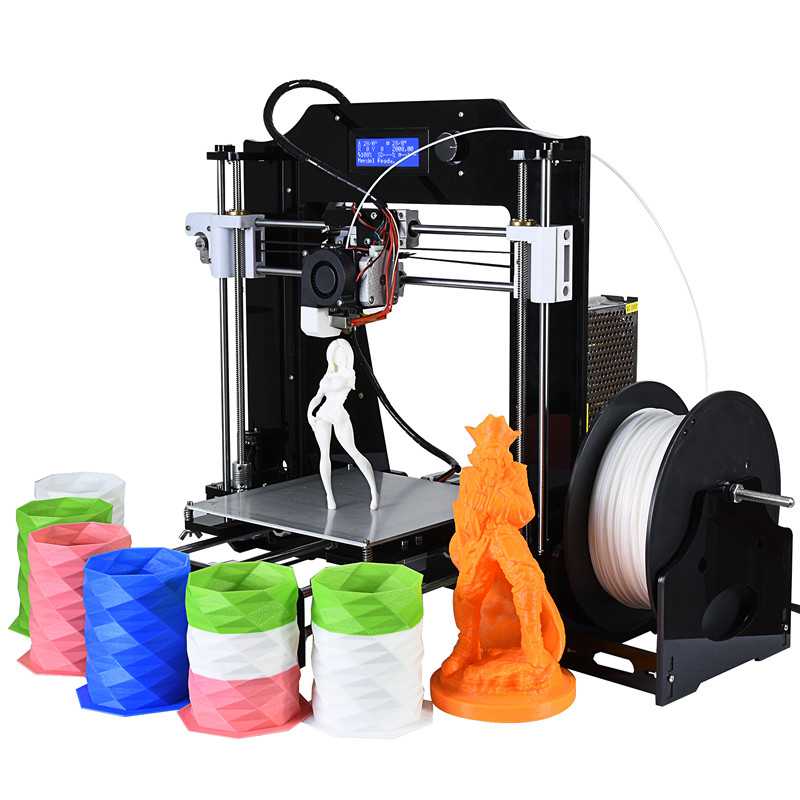 This technology uses Dimengel — photopolymer acrylic gel as printing material. The enormous build volume of 145x111x180 cm allows for time- and cost-effective production of high-quality large prints. The Massivit 1800 is used in engineering, architecture, design, and entertainment.
This technology uses Dimengel — photopolymer acrylic gel as printing material. The enormous build volume of 145x111x180 cm allows for time- and cost-effective production of high-quality large prints. The Massivit 1800 is used in engineering, architecture, design, and entertainment.
Credit: techcon-xxl.eu
Pros
- Fast printing speed
- The ability to print two objects simultaneously
- No need for support structures
- High-quality accurate prints
Cons
- Only proprietary consumables can be used
- High price
Alongside the Massivit 1800, the manufacturer offers some even more advanced models of industrial high-speed 3D printers. The Massivit 1800 Pro provides a wider range of print modes, such as Variable Resolution and Mega Quality; the Massivit 5000 allows for the use of more printing materials and the High definition mode with the minimum layer height of 0. 5 mm; the Massivit 10000 features the proprietary Cast-in-Motion (CIM) technology, which in combination with Gel Dispensing Printing (GDP) method allows printing and casting the mold simultaneously.
5 mm; the Massivit 10000 features the proprietary Cast-in-Motion (CIM) technology, which in combination with Gel Dispensing Printing (GDP) method allows printing and casting the mold simultaneously.
Nexa3D NXE 400 3D printer
Credit: nexa3d.com
The NXE 400 is an industrial resin 3D printer based on proprietary Lubricant Sublayer Photo-curing (LSPc) technology, which allows for ultrafast printing speed, that is 6 times the speed of any other industrial 3D printer. The device features a large build volume of 274x155x400 mm and provides high-detailed prints with edge-to-edge consistency and perfectly smooth surface finish. The NXE 400 is compatible with a wide range of resins, including xPeek, xABS, and xFlex.
Pros
- Extremely high print speed
- Accurate detailed prints with smooth surface finish
- Large build volume
- Wide range of compatible materials
Cons
- Price can be too high for small companies
The fastest special purpose 3D printers
A lot of 3D printers in the market perform pretty well in a number of various applications, be it prototyping, consumer goods manufacturing, modeling, and more. Still, each model has its own strengths and weaknesses, determined by the technology used, the build volume, compatibility and other factors that we take into consideration when choosing the device answering our requirements. Aside from this, there are industries with very specific needs, like, for example, dentistry or jewelry, so some manufacturers design special purpose 3D printers for such applications.
Still, each model has its own strengths and weaknesses, determined by the technology used, the build volume, compatibility and other factors that we take into consideration when choosing the device answering our requirements. Aside from this, there are industries with very specific needs, like, for example, dentistry or jewelry, so some manufacturers design special purpose 3D printers for such applications.
The fastest dental 3D printer from China
Uniz NBEE 3D printer
Credit: uniz.com
The Uniz NBEE is an LCD 3D printer designed specially for the dental industry. Claimed as the fastest resin 3D printer in the world, it can produce six dental models in 5 minutes. High print accuracy is of crucial importance in dentistry, and the Uniz NBEE perfectly meets this goal, producing aligners, removable dies, surgical guides, crowns, bridges, and brackets. The Uniz company produces a wide range of special photosensitive dental resins; besides, the printer is compatible with third-party materials.
Credit: uniz.com
Pros
- Extremely high speed (max. 280 mm/h)
- Great quality of prints
- Wide range of compatible materials
Cons
- Price
The fastest 3D printer for jewelry
Prusa SL1S Speed 3D printer
Credit: prusa3d.com
When we talk about 3D printing in jewelry production, we don’t normally mean printing end-use products. It’s rather about printing wax models that will then be used in the traditional lost wax method. The Prusa SL1S Speed is a perfect device to be used for this. The SL1S is an LCD resin 3D printer that combines high-quality detailed printing, which is essential for jewelry manufacturing, and lightning-fast speed. The device features the build volume of 127x80x150 mm and prints with 405 nm UV resin; the SL1S also allows using resins produced by different manufacturers.
Credit: prusa3d.com
Pros
- Lightning-fast speed
- Excellent print quality
- Easy operation
- Third-party consumables compatibility
Cons
- Rather pricey
Conclusion
To summarize, we can say that the speed parameter should be definitely taken into consideration while choosing a 3D printer. Still, as we see, there are plenty of other factors that can affect the duration of the printing process, so the point is to find the right balance between speed, quality and cost-effectiveness, which answers your particular requirements. For large-scale manufacturing, speed is of great importance, while for consumers it can be the printing quality that comes to the fore. We hope that our list will help you choose the best 3D printer suitable for your personal needs.
Still, as we see, there are plenty of other factors that can affect the duration of the printing process, so the point is to find the right balance between speed, quality and cost-effectiveness, which answers your particular requirements. For large-scale manufacturing, speed is of great importance, while for consumers it can be the printing quality that comes to the fore. We hope that our list will help you choose the best 3D printer suitable for your personal needs.
Fastest SLA 3D Printer - SLASH 3D Printer
Description
Fastest 3D Printer
The SLASH 3D printer is a novelty that has shaken up the 3D printing market. What is special about this device? Quite simply, this is the fastest SLA 3D printer available today. Let's list its features:
High speed printing . Just imagine, this desktop 3D printer allows you to create products at a speed of up to 200 mm/hour;
High print precision . The fastest 3D printer SLASH did not let us down with the accuracy of 3D printing.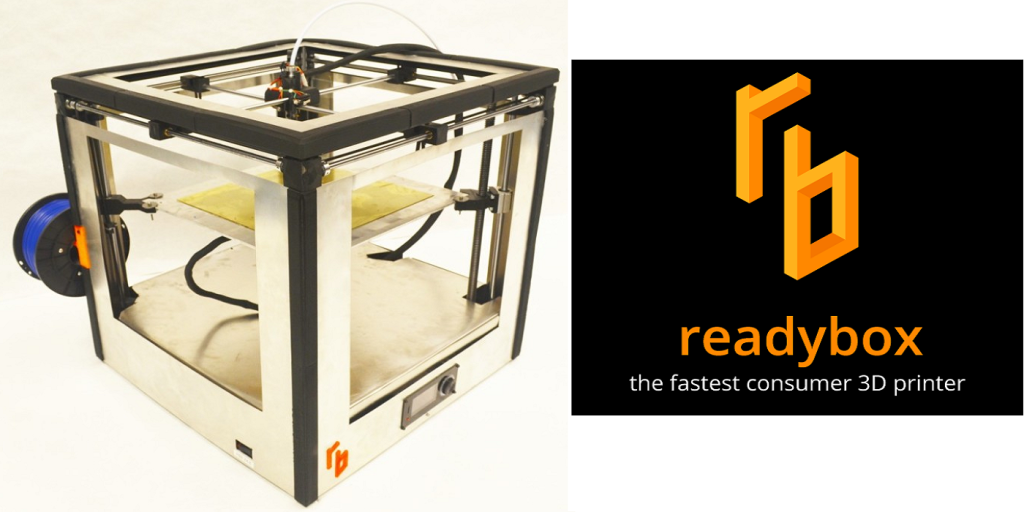 The minimum available layer thickness is 10 microns, which not all professional devices can boast of;
The minimum available layer thickness is 10 microns, which not all professional devices can boast of;
Large plot area . This 3D printer is also distinguished by a large build area for equipment of its class - as much as 192x120x200 mm. This is not just enough, it is more than enough even for non-standard tasks;
Powerful software . Specialized software turns the fastest 3D printer into one of the most functional 3D printers due to numerous flexible 3D printing settings;
Large selection of materials available . Manufacturers have developed a whole line of specialized photopolymers to work with the fastest 3D printers. With them, each user will be able to realize any ideas.
SLASH 9 3D printer0003
SLASH 3D printers are a revolutionary development of UNIZ in the field of 3D printing, which uses stereolithography technology to build objects from photopolymer resin. As a polymerization factor, the printer uses light from the LED array and the LCD module that forms the layer mask. Incredible print speed in the printers of this series became possible due to the implementation by the company's engineers of a unique cooling system for the print area. The construction zone is cooled using a special liquid module - a heat exchanger. To fully exploit the unique capabilities of SLASH and SLAH+ printers, UNIZ has developed a series of unified photopolymer formulations. The SLASH model, thanks to its patented technological innovations, has reduced the cost of printing equipment to the level of 3D printers using FDM technology, and even surpassed them in terms of the speed of building objects.
As a polymerization factor, the printer uses light from the LED array and the LCD module that forms the layer mask. Incredible print speed in the printers of this series became possible due to the implementation by the company's engineers of a unique cooling system for the print area. The construction zone is cooled using a special liquid module - a heat exchanger. To fully exploit the unique capabilities of SLASH and SLAH+ printers, UNIZ has developed a series of unified photopolymer formulations. The SLASH model, thanks to its patented technological innovations, has reduced the cost of printing equipment to the level of 3D printers using FDM technology, and even surpassed them in terms of the speed of building objects.
Features:
- The relatively low price of this series of printers is comparable to FDM printing equipment.
- The use of a unique combination of LED array and LCD module provides a faster build speed than FDM printers and the quality inherent in stereolithography.
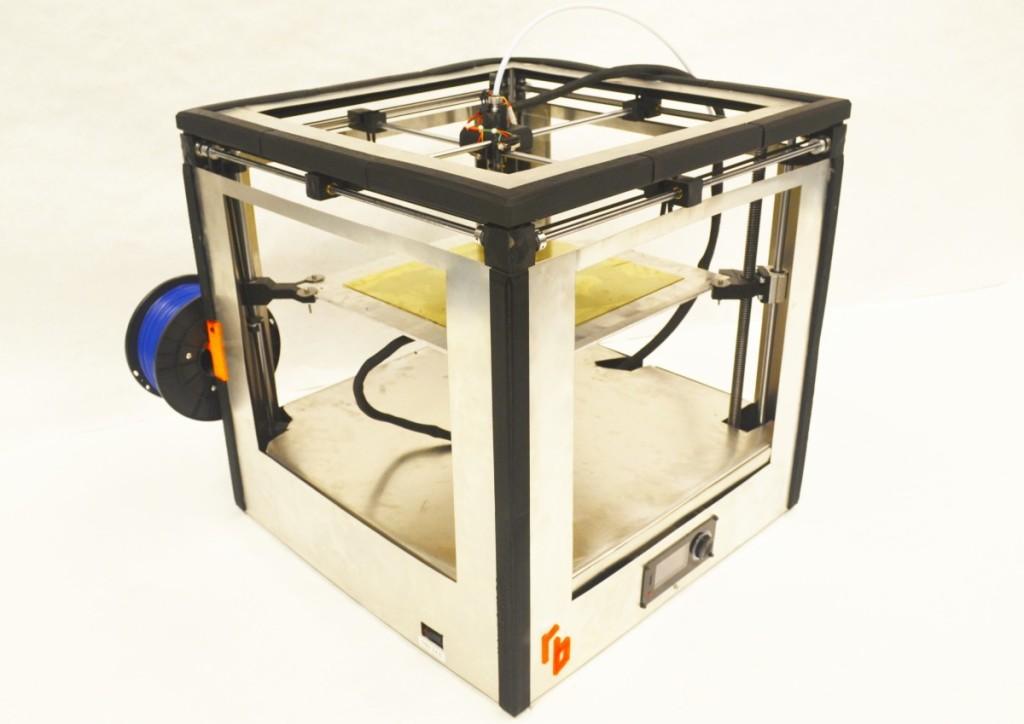
- Unique resin cartridge system for economical resin usage and easy storage.
- Steel-reinforced frame to ensure the build area is dimensionally stable and prevents the device from deforming, which could affect print quality.
SLASH 3D printer
Specifications
| 3D printing technology | LCD Stereolithography |
| Construction area | 192 x 120 x 200 mm |
| XY Resolution | 75 micron, WQXGA [2560 × 1600] |
| Precision | 50 micron |
| Layer thickness (Z-axis) | 10, 25, 50, 75, 100, 150, 200, 300 micron (adjustable) |
| 3D printing speed | Up to 200 mm/h Up to 1000 cm 3 /h |
| Resin level control | Automatic |
| Assembly | Fully enclosed body, adjustable build platform |
| Optical system | Blue LED array (5000 Lux blue LED array) Liquid cooling |
| 3D printer bath cover | Original polymer coating, up to 100 times stronger than PDMS |
| Operating temperature | 18-28°C |
| Interface | USB, WiFi, Ethernet |
| System requirements | Windows 7 sp1 or higher (64-bit only), Mac OS X 10. 7 or higher (64-bit only), 2 GB RAM, OpenGL 2.1 7 or higher (64-bit only), 2 GB RAM, OpenGL 2.1 |
| Compatible formats | STL, OBJ, UNIZ |
| Compatible systems | iPhone, iPad, Android phone |
| Power supply | 100-240V, 3A @ 50/60Hz, 240W |
| Dimensions | 350 x 400 x 530 mm |
| Weight | 12 kg |
| Warranty | 1 year |
Back Home
World's Fastest and Most Accurate Resin 3D Printer・Cults
HITRY, a team of innovators in 3D printing since 2014, recently announced the launch of Rocket 1, the world's first 3D printer. printer with DCLF (Digital Continuous Liquid Forming) technology. Learn more here: https://comingsoon.higizmos.com/rocket1.
Rocket 1 is capable of printing at 260 mm/hr, which is 20 to 60 times faster than traditional resin printers.
This is the highest speed achievable for a 3D printer. In the future, the printing speed may reach 1000mm/h! Instead of waiting for hours, you can now complete your project in minutes!
This exciting new product from HITRY sets a new standard in 3D printing with DCLF (Digital Continuous Liquid Forming) technology, which combines 35µm ultra-high XY resolution, DLP ultra-durability, and stereolithography top-down surface curing.
The key to continuous liquid molding of DCLF technology is a self-developed photosensitive resin.
In addition to nanomaterials to help quickly level the resin, our photosensitive resin also contains components that enhance the polymerization oxygen barrier, which increases the uncured layer in contact with oxygen, the dead zone, from zero to ten microns to tens of microns and hundreds of microns for ultra-high resolution results. . Thus, the top-down surface can be leveled quickly without changing the curing properties of the resin or using a scoop to achieve incredibly high print speeds.
. Thus, the top-down surface can be leveled quickly without changing the curing properties of the resin or using a scoop to achieve incredibly high print speeds.
In addition to the fastest print speed, Rocket 1 also has the highest XY accuracy to date. This printer can easily create intricate parts and holes as small as 0.2mm, allowing liquids and gases to pass freely - exactly the kind of precision required by researchers who use complex models to study.
Top-down printing also protects prints from gravitational and peeling forces, allowing high-transparency printing. Rocket 1 prints as transparently as glass. You can even use it to print a pair of glasses for yourself. Thanks to the top-down design, it is easy to print flexible models, such as shoe lasts. Models printed by Rocket 1 need very few or no supports, saving a lot of time in post-processing.
Rocket 1 creates its pieces with very fine detail and each piece can fit perfectly with a gap of only 0.05mm on one side which is much better than most 3D printers and the model comes out smooth and flawless as a piece, cast under pressure.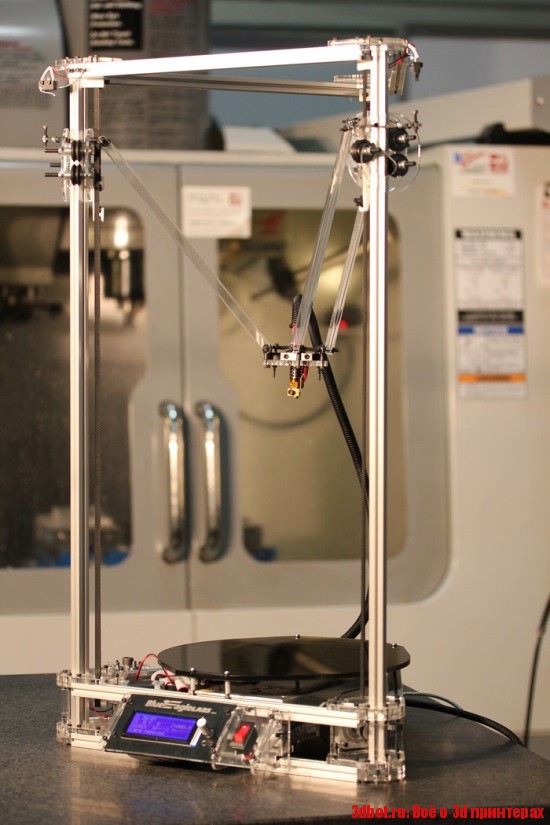 Rocket 1 offers 8 types of photosensitive resins that cover all industries as well as a variety of applications, and it can start printing immediately with just 300g of resin.
Rocket 1 offers 8 types of photosensitive resins that cover all industries as well as a variety of applications, and it can start printing immediately with just 300g of resin.
With powerful DCLF technology, the Rocket 1 is capable of printing solid 8CM cube models. In addition, Rocket 1 is intuitive and easy to use. No alignment or professional experience required. Just plug it in and start typing. Because light is projected from the top of the machine down onto the surface of the resin and cures it, Rocket 1 has no vulnerable parts such as LCD screens or release films, so maintenance is not required, saving you time and money.
With maximum speed and ultra-high resolution DCLF technology, the HITRY Rocket 1 is ushering in a new era of 3D printing, offering powerful, convenient, quality printing experiences for everyone. HITRY Rocket 1 is coming to Kickstarter soon. Limited special offers start at $599. Learn more here: https://comingsoon.higizmos.com/rocket1.
Rocket 1 is looking for KOLs to help with the first hands-on review.